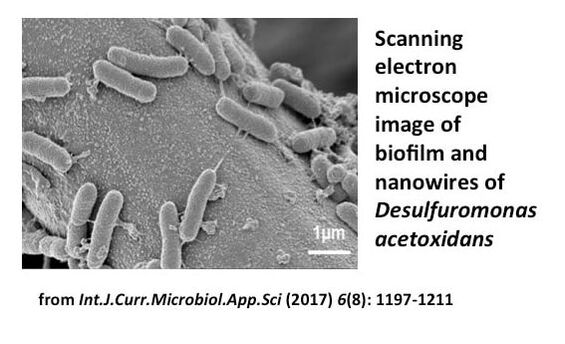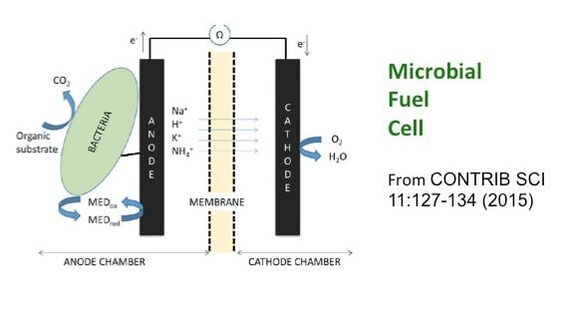In order to thrive in different environments, bacteria use specific mechanisms based on available resources. A group that has received special attention in recent years is one that uses/generates electricity.
When we say we breathe oxygen, what we really mean mechanistically is that we use oxygen as an electron acceptor of the energy-generating process (see my posts on mitochondria and ATP) essential to our lives. This chain of biochemical reactions starts with food metabolism where carbohydrates/sugars we eat provide the electrons that are then passed around different “electron carriers” to be finally delivered to oxygen. In low- or no-oxygen environments, bacteria have the ability to use other elements as electron acceptors including iron, manganese and other metals (in oxide form), with the first metal-reducing bacteria reported in the 1980s, Shewanella and Geobacter. More recently (in 2005) Geobacter bacteria were reported to have what are now known as “bacterial nanowires”, based on the ability of their long pili or extracellular protein nanofilaments to conduct electricity. This is different from our cells in that the electron transfer is “extra-cellular” as it happens outside of the bacterial cell. The current model is one of “electron hopping” along bacterial nanowires. One Geobacter species has been shown to produce nanowires of up to 20 μm in length, which is about 20-fold longer than Geobacter cells. Individual fibers have the charge transport capacity to discharge respiratory electrons at μm distances from the cell at ∼1 billion electrons per second.






 RSS Feed
RSS Feed